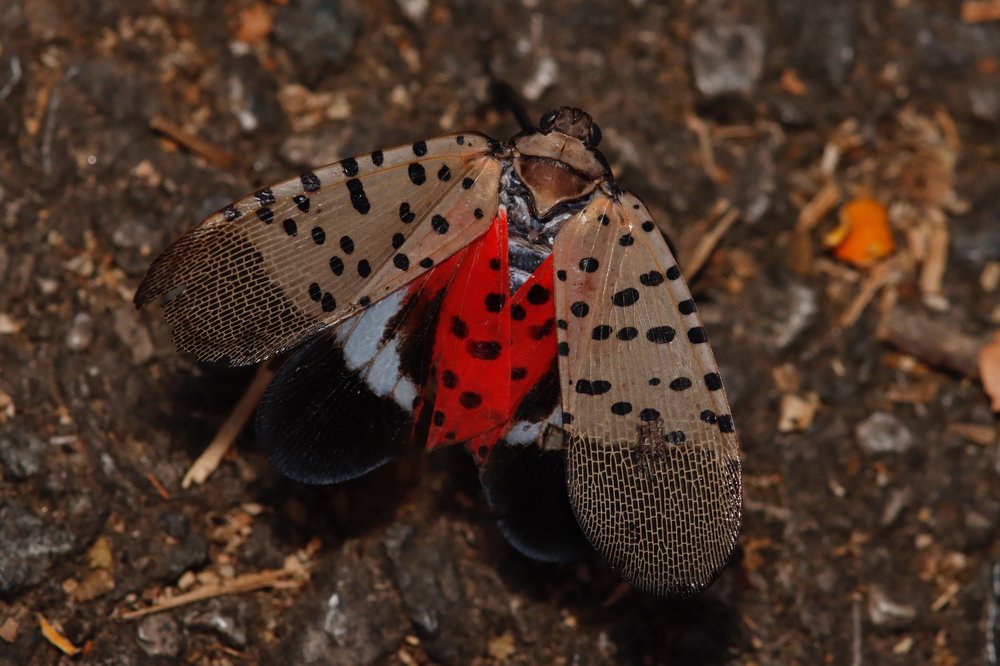Lanternfly invasion: NYC bugs are living their best (and longest) lives
Dec. 4, 2024, 7 p.m.
The bugs' life cycle is five months longer than when they were first spotted in the city in 2014, researchers said.

New York City has been good to spotted lanternflies. So good, in fact, that the invasive bugs are living longer.
That was the conclusion of an NYU study released on Wednesday, which determined that lanternflies are living as much as five months longer than when the horde first arrived. Researchers analyzed the citizen science database, iNaturalist, for spotted lanternfly sightings. Using this data, they determined that the polka-dotted insects are hatching up to several months earlier in the New York City area, while also sticking around for more than a month longer than when the lanternfly invasion began in 2014. The colorful planthopper’s longer life cycle means the voracious insects have more time to reproduce, spread and wreak havoc on trees.
“By virtue of them being active longer and longer in the year, that means there's going to be more lanternflies that can be produced within a year,” said Kristin Winchell, who is the study's author and a professor of biology at NYU. She added that more lanternflies could translate to more damage to the environment.
Lanternflies live for about a year.
The study noted that in the early years of the lanternfly onslaught, the pests arrived in late spring and were gone by early October.
But data from 2022 shows that nymphs hatched as early as February and died around early November. Even newer data indicates that local lanternflies are living into December.
Kelli Hoover, an entomology professor at Penn State University, was not surprised by the study's results. She attributed lanternflies’ longer life cycles, at least in part, to climate change.
“It’s well known that dense urban areas trap heat and create microclimates that are warmer than the surrounding suburbs and rural areas,” Hoover said. “Given that it was probably the warmest on record into November, this means that the impacts on plants and people are greater.”
Cold climates are inhospitable for spotted lanternflies, but cities provide a warmer refuge. New York City’s climate has extended the spotted lanternfly's life cycle by speeding up developmental rates, the report found, with the insects taking biological cues from the temperature and laying eggs later in the season, which hatch earlier.

A lack of predators and competition for food contributed to New York's lanternfly bonanza despite environmental officials’ pleas to kill the pests on sight.
“Urbanization is acting in a way to mediate that colder regional climate to allow these bugs to be active for a much larger portion of the year than they otherwise would be able to,” Winchell said. “The combination of regional temperature variation, along with these local urban climate variations, [is] creating favorable conditions for them to just be able to be active longer and be able to reproduce more.”
Gothamist previously reported on early-stage research about possibly introducing non-native predators to kill the lanternflies.
New York City also serves as a travel hub for the bugs. They’ve spread to areas that were previously considered off-limits due to cold weather, including Rhode Island and Boston.
"If there's a bug on that plane, [or] egg mass hidden in someone's luggage, that could start a new invasion front in Canada,” Winchell said. “The fact that cities appear to be kind of facilitating this increased activity is very worrisome for our projections of where they could be.”
Researchers said the insects have been observed hitching rides on trains, planes, boats and cars.
“If an insect is thriving in New York City and ends up on a car, on a plane, on a train and then hops off in the next city over, it's not going to seem so different,” Winchell said.
The bugs can have a big impact on agriculture. The invasive pest has taken a particular liking to grapes. New York state is the third largest producer of wine in the country, producing around 30 million gallons annually.
Lanternflies’ impact isn’t limited to farms. The bug’s preferred host is the tree of heaven, which is commonly found in urban areas. The insects can weaken a tree as they suck its sap, making it susceptible to disease and death.
The insects are also a problem because they spray a copious amount of sugary excrement called honeydew, which encourages sooty mold that suffocates plants.
“You can spot a real infestation of lanternflies if you go out and just see the entire side of a tree and the leaves just covered in this black kind of powdery substance,” Winchell said. “They’re directly harming a lot of trees, including our city street trees like maples.”
Lanternflies are ravaging NY. Should their nemesis be imported from China?